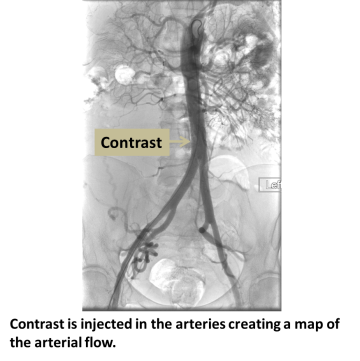Angiography
Find your care
Our board-certified physicians diagnose and treat many vascular conditions. Call 310-481-7545 to learn more about interventional radiology services.
Treatment for:
Diagnosis and possible treatment of arterial disease
Why it’s done:
Diagnosis of arterial disease can often be performed using non-invasive imaging tests such as CT angiography or MR angiography. However, catheter angiography remains the gold standard for diagnosis of several arterial conditions, and often allows for treatment of the problem at the same time.
How it’s done:
An interventional radiologist accesses an artery, usually the femoral artery at the groin. Small catheters are passed into the artery of interest, and contrast injection and X-rays are used to evaluate the arteries. If needed, treatment with angioplasty or stent can be performed concurrently.

Level of anesthesia:
Conscious sedation
Risks:
Bleeding, infection, damage to the artery wall (rupture or dissection).
Post-procedure:
Two to six hours of bed rest to prevent bleeding at the access site
Follow-up:
Variable, depending on the condition
For More Information:
For more information or to schedule an appointment with one of our IR physicians, please call 310-481-7545.